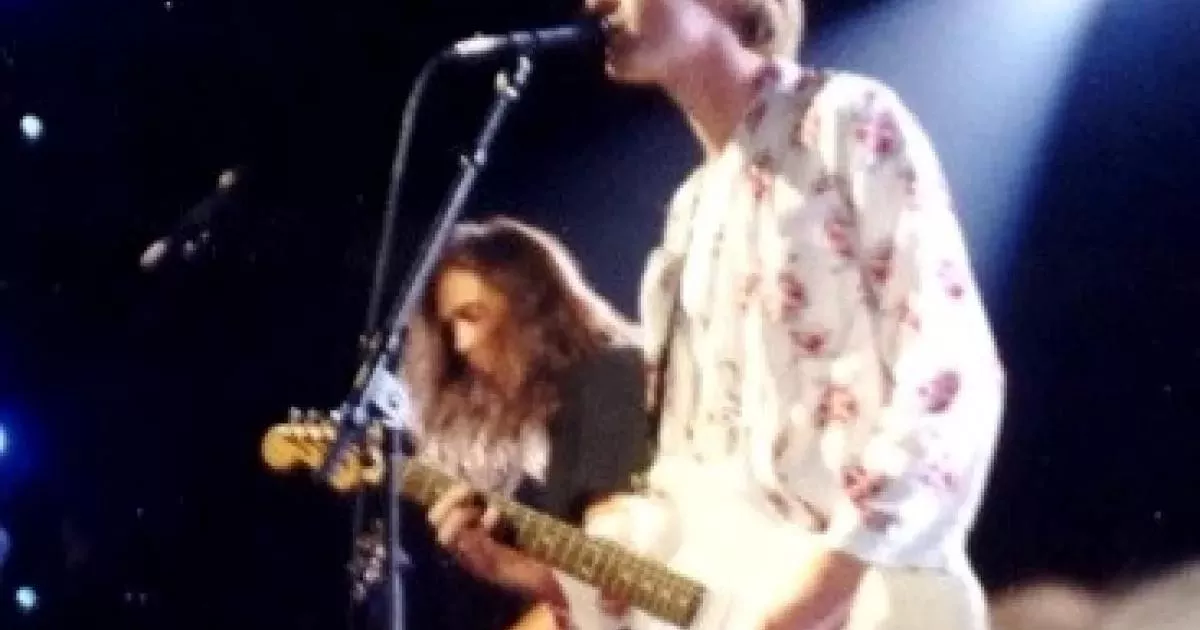Kurt Cobain was the frontman of Nirvana, a highly influential grunge band. His angsty lyrics and anti-establishment attitude resonated with Generation X, making him their reluctant spokesman. Cobain's songwriting broadened the scope of mainstream rock, solidifying his place as one of rock music's most impactful figures.
1959: Martin D-18E acoustic guitar played
In 1959 Cobain played a righthanded Martin D-18E acoustic guitar modified for left-handed playing.
July 31, 1965: Parents' Marriage
On July 31, 1965, Wendy Elizabeth Fradenburg and Donald Leland Cobain, Kurt Cobain's parents, were married in Coeur d'Alene, Idaho.
February 20, 1967: Kurt Cobain's Birth
On February 20, 1967, Kurt Donald Cobain was born in Aberdeen, Washington. He would later become the lead vocalist, guitarist, and songwriter for the band Nirvana, and a key figure in the grunge movement.
1969: Cobain Played a Competition Mustang Guitar
In 1969 Cobain owned and played a Competition Mustang guitar.
1969: Cobain's Favorite Competition Mustang
In 1969, Kurt Cobain owned a Competition Mustang, which he cited as his favorite guitar, despite acknowledging its flaws and inefficiencies.
April 24, 1970: Birth of Sister Kimberly
On April 24, 1970, Kurt Cobain's younger sister, Kimberly, was born.
1973: Raw Power Listed as Favorite Album
In 1973, The Stooges released Raw Power. Cobain later listed Raw Power as his favorite album of all time in his journals.
January 1979: Birth of Chad Cobain
In January 1979, Kurt Cobain's stepmother, Jenny Westeby, gave birth to a boy named Chad Cobain, which impacted Kurt's relationship with his new family.
June 28, 1979: Custody to Father
On June 28, 1979, Kurt Cobain's mother granted full custody to his father, Donald Cobain, due to behavioral issues.
1980: First Drug Experience
In 1980, at the age of 13, Kurt Cobain had his first drug experience with cannabis.
February 20, 1981: Gift of a Guitar
On February 20, 1981, for his 14th birthday, Kurt Cobain received a used guitar from his uncle, marking the beginning of his musical journey.
1983: First Concert
In 1983, Kurt Cobain purportedly attended his first concert, Sammy Hagar and Quarterflash, at the Seattle Center Coliseum, an event that family and classmates attested to, though Cobain claimed his first show was the Melvins.
1985: Formation of Fecal Matter
In early 1985, Kurt Cobain formed the band Fecal Matter after dropping out of Aberdeen High School, one of the joke bands associated with the Melvins. Dale Crover played bass and Greg Hokanson played drums.
1986: First Heroin Use
In 1986, Kurt Cobain first used heroin, administered by a dealer in Tacoma, Washington.
1986: Moved into Apartment
In late 1986, Kurt Cobain moved into an apartment, paying rent with his job at the Polynesian Resort, and frequently traveled to Olympia, Washington, for rock concerts, beginning a relationship with Tracy Marander.
1987: Inspiration for Polly
In 1987, Cobain was affected enough to write "Polly" from Nevermind after reading a newspaper story of an incident in 1987, when a 14-year-old girl was kidnapped, raped and tortured.
1987: Formation of Nirvana
In 1987, Kurt Cobain formed the band Nirvana with Krist Novoselic and Aaron Burckhard in Seattle, marking the beginning of their journey in the burgeoning grunge scene.
1987: Cobain Aware of Love Through Film
In 1987, Kurt Cobain was already aware of Courtney Love through her role in the film Straight to Hell.
1988: Release of Pixies' Surfer Rosa
In 1988, Pixies released their debut album, Surfer Rosa, which would later inspire Cobain to change his songwriting style.
January 21, 1989: Possible First Meeting with Courtney Love
According to Michael Azerrad's biography, Kurt Cobain possibly met Courtney Love on January 21, 1989, at a Dharma Bums gig in Portland where Nirvana played as a support act.
July 18, 1989: Cocaine Use
On July 18, 1989, while on tour, Kurt Cobain and Krist Novoselic took cocaine after their gig in New York.
November 27, 1989: Mental Breakdown in Rome
On November 27, 1989, Kurt Cobain suffered a mental breakdown during Nirvana's show in Rome, smashing his guitar and shouting, "I'm going to kill myself!"
1989: Inspiration for "About a Girl" from Meet the Beatles!
In 1989, Cobain wrote the song "About a Girl" from Nirvana's debut album Bleach, after spending three hours listening to Meet the Beatles!.
1989: Formation of side project The Jury
In 1989, Cobain, along with members of Screaming Trees, formed a side project called The Jury. Over two days, August 20 and 28, 1989, the band recorded four songs by Lead Belly: "Where Did You Sleep Last Night?", an instrumental version of "Grey Goose", "Ain't It a Shame", and "They Hung Him on a Cross".
1989: First American Tour and Guitar Destruction
In 1989, Nirvana embarked on their first American tour, during which Kurt Cobain played an Epiphone ET270. He developed a habit of destroying guitars onstage, including this one, which lead to Sub Pop needing to replace them.
1989: Release of Bleach
In 1989, Nirvana released their debut album "Bleach" on Sub Pop, marking a significant step in their early career. The album featured Chad Channing on drums.
January 12, 1990: Possible Meeting with Courtney Love
According to Charles R. Cross's biography, Kurt Cobain possibly met Courtney Love on January 12, 1990, at the Satyricon nightclub in Portland during a Nirvana show.
1990: Release of "Where Did You Sleep Last Night?" on The Winding Sheet
In 1990, "Where Did You Sleep Last Night?" was released on Mark Lanegan's album, The Winding Sheet.
1990: Musical collaboration with Tobi Vail in Bathtub is Real
In 1990, Cobain collaborated with his girlfriend, Tobi Vail of Bikini Kill, on a musical project called Bathtub is Real. They both sang and played guitar and drums, recording their songs on a four-track tape machine.
1990: Heroin Use Disclosure
In 1990, Kurt Cobain told Krist Novoselic that he had used heroin.
1990: Nirvana signs to DGC
In 1990, Nirvana signed to DGC under recommendation from Sonic Youth's Kim Gordon.
May 1991: Formal Introduction to Courtney Love
In May 1991, Kurt Cobain and Courtney Love were formally introduced at an L7 and Butthole Surfers concert in Los Angeles, according to Everett True.
May 17, 1991: Alleged Introduction to Courtney Love
According to Everett True's book, Kurt Cobain was formally introduced to Courtney Love on May 17, 1991.
1991: Commercial Success with Nevermind
In 1991, Nirvana achieved commercial success with their album "Nevermind", featuring the hit single "Smells Like Teen Spirit". This album propelled them into the mainstream and solidified their place in music history.
1991: Release of Nevermind and breakthrough success
In 1991, Nirvana, with Dave Grohl on drums, released their major-label debut album, "Nevermind". The album's lead single, "Smells Like Teen Spirit", propelled Nirvana into the mainstream and popularized grunge music.
1991: Nirvana tours Europe with Sonic Youth
In the summer of 1991, Nirvana and Sonic Youth did a two-week tour of Europe, as documented in the 1992 documentary, 1991: The Year Punk Broke.
February 24, 1992: Cobain and Love's Wedding
On February 24, 1992, Kurt Cobain and Courtney Love were married on Waikiki Beach in Hawaii. Love wore a dress once owned by Frances Farmer, and Cobain wore green pajamas and a Guatemalan purse.
August 18, 1992: Birth of Frances Bean Cobain
On August 18, 1992, Frances Bean Cobain, the daughter of Kurt Cobain and Courtney Love, was born. The couple faced scrutiny and legal challenges due to alleged drug use, leading to a temporary removal of Frances from their care.
October 1992: Cobain's Bisexuality
In October 1992, Kurt Cobain discussed his sexuality in an interview with Monk Magazine, stating he would be bisexual if not attracted to Courtney Love. He also expressed identification with the gay community in The Advocate.
1992: Support for Gay Rights and Pro-Choice Movement
In 1992, Cobain and Nirvana publicly supported gay rights, playing at a benefit concert opposing Oregon's Ballot Measure 9. Cobain was also a vocal supporter of the pro-choice movement and participated in L7's Rock for Choice campaign, leading to death threats from anti-abortion activists.
1992: Collaboration with William S. Burroughs
In 1992, Cobain contacted William S. Burroughs for a collaboration. Burroughs sent a recording of "The Junky's Christmas", to which Cobain added guitar backing. They later met to produce "The 'Priest' They Called Him", a spoken word version of the song.
1992: LGBTQ+ Advocacy
In 1992, Kurt Cobain advocated for LGBTQ+ rights, including performing at a benefit in Oregon against Ballot Measure 9.
1992: Heroin Use Affecting Nevermind Tour
In 1992, Kurt Cobain's heroin use began to affect Nirvana's Nevermind tour. During a photoshoot before their Saturday Night Live performance on January 11, he fell asleep several times due to heroin use.
1992: R.E.M. releases Automatic for the People
In 1992, R.E.M. released "Automatic for the People". Nirvana's posthumously released "MTV Unplugged in New York" album in 1994 has drawn comparisons to R.E.M's album.
1992: Release of documentary 1991: The Year Punk Broke
In 1992, the documentary "1991: The Year Punk Broke" was released. The film documents the tour of Europe done by Nirvana and Sonic Youth in 1991.
1992: Near-Death Overdose
In 1992, the morning after Nirvana's performance on Saturday Night Live, Kurt Cobain experienced his first near-death overdose after injecting heroin; he was resuscitated by Courtney Love.
1992: Cobain discusses Pixies influence
In a 1992 interview with Melody Maker, Cobain said that hearing Pixies' 1988 debut album, Surfer Rosa, "convinced him to abandon his more Black Flag-influenced songwriting in favor of the Iggy Pop/Aerosmith-type songwriting that appeared on Nevermind."
1992: Cobain Describes "Lithium"
In a 1992 interview, Cobain stated that the Nirvana song "Lithium" was a fictionalized account of a man who "turned to religion as a last resort to keep himself alive" after the death of his girlfriend.
1992: Cobain Interview on Guitars
In a 1992 interview, Kurt Cobain stated that "Junk is always best" regarding his preference for budget guitars, explaining it was a necessity due to difficulty finding high-quality left-handed guitars.
May 2, 1993: Overdose in Seattle
On May 2, 1993, Kurt Cobain overdosed at his home in Seattle and was taken to Harborview Medical Center, but was discharged the same day.
July 23, 1993: Overdose Before New Music Seminar Performance
On July 23, 1993, Kurt Cobain overdosed before a performance at the New Music Seminar in New York City; Courtney Love injected him with naloxone to resuscitate him, and he performed with Nirvana without indicating anything had happened.
October 1993: Cobain meets William S. Burroughs
In October 1993, Cobain met with William S. Burroughs at his home in Lawrence, Kansas.
1993: Cobain discusses Lead Belly's influence
In 1993, Cobain introduced Lead Belly as his favorite performer and revealed that he had been introduced to him from reading the American author William S. Burroughs.
1993: Cobain praises R.E.M.
In 1993, Cobain praised R.E.M., saying: "If I could write just a couple of songs as good as what they've written... I don't know how that band does what they do. God, they're the greatest. They've dealt with their success like saints, and they keep delivering great music".
1993: Health Issues and Diagnosis
In 1993, Kurt Cobain spoke about his health issues, including chronic bronchitis, an undiagnosed stomach condition, minor scoliosis, and mental health struggles, including depression and narcolepsy.
1993: Interview with The Advocate
In 1993, Kurt Cobain was interviewed by The Advocate, a gay magazine, which he said would be his only interview for the Incesticide album. The album's liner notes decried homophobia, racism, and misogyny.
1993: Authorized Biography
In 1993, Michael Azerrad publishes an authorized biography about Nirvana.
1993: Pat Smear joins Nirvana
In 1993, ex-Germs guitarist Pat Smear joined Nirvana. The Meat Puppets also appeared onstage during Nirvana's 1993 MTV Unplugged appearance to perform three songs from their second album, Meat Puppets II.
1993: Cobain admits to trying to rip off the Pixies
In a 1993 interview with Rolling Stone, Cobain said that "Smells Like Teen Spirit" was his attempt at "trying to rip off the Pixies. I have to admit it. When I heard the Pixies for the first time, I connected with that band so heavily that I should have been in that band—or at least a Pixies cover band."
1993: Cobain's Feelings About Family
In a 1993 interview, Cobain expressed feelings of shame toward his parents due to their divorce and his desire for a "typical family".
March 1, 1994: Diagnosis and Flight to Rome
On March 1, 1994, following a tour stop in Munich, Germany, Kurt Cobain was diagnosed with bronchitis and severe laryngitis, leading him to fly to Rome for medical treatment the next day.
March 1994: Multiple Heroin Overdoses
By March 1994, Courtney Love had reportedly "seen Kurt close to death from heroin overdoses on more than a dozen occasions."
March 1994: Overdose and Intervention
In March 1994, Kurt Cobain overdosed on a combination of champagne and Rohypnol. Following the incident, he underwent an intervention and entered a detox program.
March 18, 1994: Cobain's Suicidal Episode
On March 18, 1994, Courtney Love contacted Seattle police, reporting that Kurt Cobain was suicidal and had locked himself in a room with a gun. Upon arrival, police confiscated firearms and pills. Cobain denied suicidal intentions, stating he was hiding from Love.
March 25, 1994: Intervention Regarding Cobain's Drug Use
On March 25, 1994, an intervention was arranged by Courtney Love for Cobain's drug use, including musician friends and record company executives. Cobain initially reacted with anger but eventually agreed to a detox program.
March 30, 1994: Cobain Enters Detox and Acquires Shotgun
On March 30, 1994, Kurt Cobain entered a residential detox facility in Los Angeles. On the same day before departing, Cobain asked Dylan Carlson to purchase a shotgun, claiming it was for self-protection; this was the weapon Cobain would later use in his suicide.
April 1, 1994: Cobain Escapes Rehab and Flies to Seattle
On April 1, 1994, Kurt Cobain escaped the rehab facility and flew to Seattle. He encountered Duff McKagan on the flight, and despite previous animosity, McKagan noted that Cobain "seemed happy" but McKagan sensed that "something was wrong".
April 5, 1994: Kurt Cobain's Death
Kurt Cobain died on approximately April 5, 1994. He was an American musician best known as the lead vocalist, guitarist, and songwriter for the grunge band Nirvana.
April 5, 1994: Estimated Day of Cobain's Death
The coroner's report estimated that Kurt Cobain died on April 5, 1994, at the age of 27, at his Lake Washington Boulevard home. His body was discovered on April 8th.
April 8, 1994: Discovery of Kurt Cobain's Body
On April 8, 1994, Kurt Cobain was found dead in the greenhouse of his Seattle home at the age of 27. The police determined his death occurred approximately three days earlier due to a self-inflicted shotgun wound.
April 23, 1994: MCA Music President on Cobain's Contribution
On April 23, 1994, Music & Media reported that Jørgen Larsen, president of MCA Music Entertainment International, acknowledged Kurt Cobain's significant contribution to contemporary music, noting his ability to sell millions of albums.
1994: Planned Acoustic Album with Michael Stipe
In 1994, Cobain and Michael Stipe of R.E.M. had planned to record a demo tape for a very quiet and acoustic Nirvana album with lots of stringed instruments. Stipe was also chosen as the godfather of Cobain's and Courtney Love's daughter, Frances Bean Cobain.
1994: Tom Grant Hired to Find Kurt Cobain
In 1994, shortly before Kurt Cobain's death, Courtney Love hired private detective Tom Grant to locate her husband.
1994: Posthumous release of MTV Unplugged in New York
In 1994, the album "MTV Unplugged in New York" was released posthumously. It has drawn comparisons to R.E.M.'s 1992 release, Automatic for the People.
1994: In Utero Tour
In late 1993 and early 1994, Nirvana enlisted bands like Butthole Surfers, Shonen Knife, Chokebore and Half Japanese for the In Utero tour.
1996: Establishment of the Church of Kurt Cobain
In 1996, The Church of Kurt Cobain was established in Portland, Oregon; however, some media outlets later claimed that it was a hoax. Billy Corgan of the Smashing Pumpkins referred to Cobain as "the Michael Jordan of our generation".
1996: "Teen Spirit: The Tribute to Kurt Cobain" Released
In 1996, the documentary "Teen Spirit: The Tribute to Kurt Cobain" was released as a home video.
1998: Publication of "Who Killed Kurt Cobain?"
In 1998, Ian Halperin and Max Wallace published "Who Killed Kurt Cobain?", an investigation into a possible conspiracy surrounding Cobain's death, arguing for the case to be reopened.
1998: "The Vigil" Film Release
In 1998, the comedy film "The Vigil", about young people traveling to Seattle for Cobain's memorial vigil, was released.
1998: "Kurt & Courtney" Documentary Explores Conspiracy Theories
In the 1998 documentary "Kurt & Courtney", filmmaker Nick Broomfield investigated Tom Grant's claim that Cobain was murdered. Broomfield interviewed several people, including Eldon "El Duce" Hoke, who claimed Love offered him $50,000 to kill Cobain, though Broomfield found insufficient evidence of a conspiracy.
May 31, 1999: Cobain's Ashes Scattered
On May 31, 1999, Kurt Cobain's mother arranged a final ceremony where his ashes were scattered into McLane Creek in Olympia by his daughter, Frances Bean, as a Buddhist monk chanted.
2001: Publication of "Heavier Than Heaven"
In 2001, Charles R. Cross published "Heavier Than Heaven", a biography of Kurt Cobain, which included access to Cobain's journals, lyrics, and diaries. The book faced some criticism for alleged inaccuracies.
2001: Cobain Biography
In 2001, the Charles R. Cross biography about Cobain was released.
2001: "Teen Spirit: The Tribute to Kurt Cobain" Released on DVD
In 2001, the documentary "Teen Spirit: The Tribute to Kurt Cobain" was released on DVD.
2002: Publication of "Journals"
In 2002, a collection of Kurt Cobain's writings was published as "Journals", offering insights into his thoughts and experiences from the late 1980s until his death. The journal pages are reproduced in color, and there is a section added at the back with explanations and transcripts of some of the less legible pages.
2003: Cobain Ranked as One of the Greatest Guitarists by Rolling Stone
In 2003, David Fricke of Rolling Stone ranked Kurt Cobain the 12th greatest guitarist of all time.
2003: Paperback Version of "Journals" Released
In 2003, a paperback version of Kurt Cobain's "Journals" was released, featuring additional writings not included in the initial release.
May 2004: Formation of Kurt Cobain Memorial Committee
In May 2004, the Kurt Cobain Memorial Committee was created as a non-profit organization to honor Cobain, planning to establish a memorial park and youth center in Aberdeen.
2004: Release of B-Sides on With the Lights Out
In 2004, "Grey Goose", "Ain't It a Shame" and "They Hung Him on a Cross" were released on Nirvana's B-sides collection, With the Lights Out.
2004: Publication of "Love and Death: The Murder of Kurt Cobain"
In 2004, Ian Halperin and Max Wallace collaborated with Tom Grant to write "Love and Death: The Murder of Kurt Cobain", further exploring the conspiracy theories surrounding Cobain's death.
2005: "Last Days" Movie Based on Cobain's Final Days
In 2005, Gus Van Sant released the movie "Last Days", loosely based on the events surrounding the final days of Kurt Cobain's life, with Michael Pitt portraying a character named Blake, inspired by Cobain.
2005: "Come As You Are" Sign Erected in Aberdeen
In 2005, a sign reading "Welcome to Aberdeen—Come As You Are" was put up in Aberdeen, Washington, as a tribute to Kurt Cobain, funded by the Kurt Cobain Memorial Committee.
2006: "Kurt Cobain: About a Son" Documentary Release
In 2006, Azerrad's taped conversations with Kurt Cobain were used to create the documentary, "Kurt Cobain: About a Son", which featured music from artists who inspired Cobain.
2006: Love Retains Cobain's Ashes
In 2006, Courtney Love stated that she was keeping Kurt Cobain's ashes in a bank vault in Los Angeles, as no cemetery in Seattle would accept them.
2006: Everett True's Book
In 2006, Everett True published a book disputing previous accounts of how Cobain and Love met.
2006: Ranking on Hit Parader's List
In 2006, Hit Parader ranked Kurt Cobain 20th on their list of the "100 Greatest Metal Singers of All Time", acknowledging his vocal talent and influence in the music industry.
2006: Cobain Ranked Among Greatest Metal Singers
In 2006, Kurt Cobain was ranked number twenty by Hit Parader on their list of the "100 Greatest Metal Singers of All Time".
2006: Release of Kurt Cobain Documentaries
In 2006, two documentaries about Kurt Cobain were released: All Apologies: Kurt Cobain 10 Years On, directed by Jon Brewer, and The Last 48 Hours of Kurt Cobain, produced by the BBC.
January 2007: Courtney Love Shops Cobain Biography for Movie Adaptation
In January 2007, Courtney Love began seeking a movie studio in Hollywood to adapt the biography Heavier Than Heaven into a feature film about Kurt Cobain and Nirvana.
2008: Publication of "Cobain Unseen"
In 2008, Charles R. Cross published "Cobain Unseen", a compilation of annotated photographs, creations, and writings by Kurt Cobain throughout his life and career.
July 2009: Controversy Over Cobain Monument Quote
In July 2009, controversy arose over a monument to Kurt Cobain in Aberdeen that included the quote "... Drugs are bad for you. They will fuck you up." The city decided to alter the expletive, but fans restored it.
September 2009: Kurt and Sid Debuts in London
In September 2009, the play Kurt and Sid by Roy Smiles, which imagines a meeting between Cobain and the ghost of Sid Vicious on the day of Cobain's suicide, premiered at the Trafalgar Studios in London's West End.
2009: Cobain Included in Guitar Hero 5
In 2009, Kurt Cobain was included as a playable character in the video game Guitar Hero 5. This sparked controversy, with Novoselic and Grohl condemning the inclusion and Love threatening to sue. Activision stated that Love had contributed to the game's development.
2009: Tobi Vail Reflects on Collaboration with Cobain in Everett True's Biography
In 2009, Tobi Vail reminisced about her musical collaboration with Cobain in Everett True's book, "Nirvana: The Biography." She noted Cobain's enthusiasm for her creativity and their shared musical exploration.
December 2013: Hoquiam Announces Annual Nirvana Day
In December 2013, the city of Hoquiam, Washington, where Kurt Cobain once lived, announced that April 10 would be the annual Nirvana Day.
January 2014: Aberdeen Declares Annual "Kurt Cobain Day"
In January 2014, Cobain's birthday, February 20, was declared the annual "Kurt Cobain Day" in Aberdeen.
March 2014: Seattle Police Develop Film from Cobain's Death Scene
In March 2014, the Seattle police developed four rolls of film from Kurt Cobain's death scene, revealing clearer images than previous Polaroids. These photos, reviewed by Detective Mike Ciesynski, confirmed Cobain's death as a suicide. The images were released weeks before the 20th anniversary of Cobain's death.
April 10, 2014: Nirvana Inducted into Rock and Roll Hall of Fame
On April 10, 2014, Nirvana was inducted into the Rock and Roll Hall of Fame, with Grohl, Novoselic, and Love accepting the award. Kurt Cobain was remembered during the ceremony. He is also known as one of the most famous members of the 27 Club.
2014: Induction into Rock and Roll Hall of Fame
In 2014, Kurt Cobain was posthumously inducted into the Rock and Roll Hall of Fame along with his Nirvana bandmates, Krist Novoselic and Dave Grohl, in their first year of eligibility, recognizing their significant impact on music.
January 2015: Premiere of Kurt Cobain: Montage of Heck
In January 2015, Kurt Cobain: Montage of Heck, a film by Brett Morgen, premiered at the Sundance Film Festival before its release on smaller screens and in cinemas.
2015: Release of Soaked in Bleach
In 2015, the docudrama Soaked in Bleach, directed by Benjamin Statler, was released. The film explores the events surrounding Kurt Cobain's death through the eyes of private detective Tom Grant, and questions the ruling of suicide. Following its release, Courtney Love's legal team issued a cease-and-desist letter against theaters that screened the documentary.
2019: Publication of "Serving the Servant: Remembering Kurt Cobain"
In 2019, Danny Goldberg, former manager of Nirvana, published "Serving the Servant: Remembering Kurt Cobain" on the 25th anniversary of Cobain's death.
2020: Martin D-18E Acoustic Guitar Auction
In 2020, Cobain's 1959 Martin D-18E acoustic guitar became the most expensive guitar ever sold, fetching over $6 million at auction.
July 2021: Cobain's Childhood Home to Be Included on Heritage Register
In July 2021, it was confirmed that Kurt Cobain's childhood home in Aberdeen would be included on the Washington State Heritage Register and transformed into an exhibit for visitors.
2022: Auction of Cobain's 1969 Competition Mustang
In 2022, Kurt Cobain's 1969 Competition Mustang, which he played in the "Smells Like Teen Spirit" music video, was sold at auction to Jim Irsay for $4.5 million.
April 13, 2024: BBC Airs Kurt Cobain Documentary
On April 13, 2024, to commemorate the 30th anniversary of Kurt Cobain's death, BBC Two and BBC iPlayer aired a new documentary titled Kurt Cobain: Moments That Shook Music.
Mentioned in this timeline
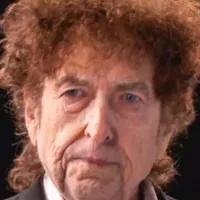
Bob Dylan is a highly influential American singer-songwriter renowned as...
Saturday Night Live SNL is a late-night live sketch comedy...
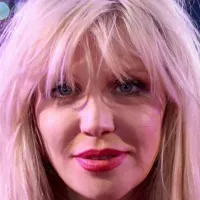
Courtney Love is an American singer songwriter guitarist and actress...
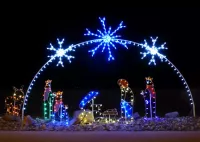
Christmas is an annual festival celebrated on December th commemorating...
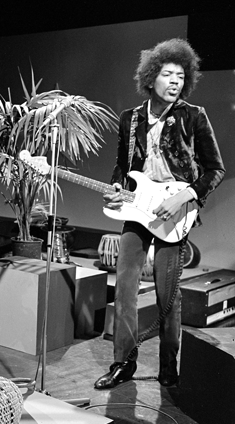
Jimi Hendrix was an American musician renowned for his extraordinary...
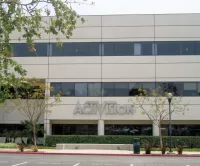
Activision Publishing Inc based in Santa Monica California is a...
Trending
1 month ago Dylan O'Brien Stars in Sam Raimi's Outrageous Horror Comeback, 'Send Help'

1 month ago Ubisoft's Anno 117 includes AI art placeholder; Fans react negatively.
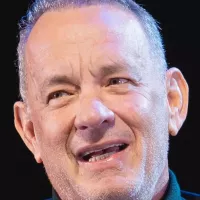
24 days ago Tom Hanks returns to theater in 'This World of Tomorrow,' receiving mixed reviews.
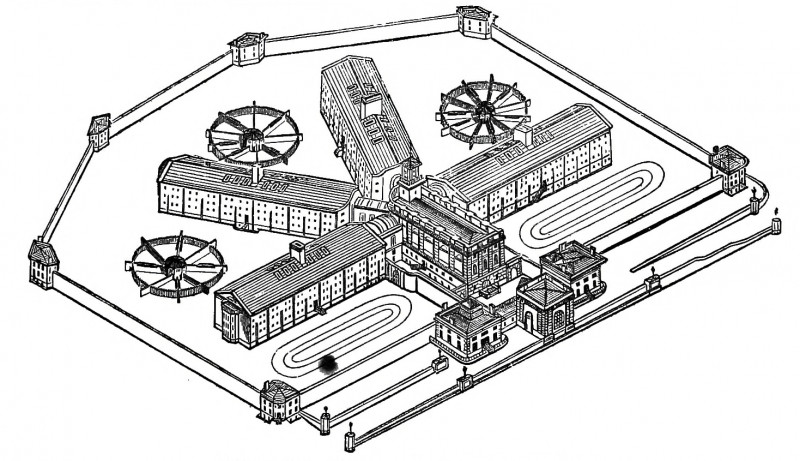
5 months ago Ukraine and Russia Complete Prisoner Exchange: Over 1,000 Return Home

6 months ago Wings acquire Li Yueru, address roster issues after Bueckers situation, waive Charles.
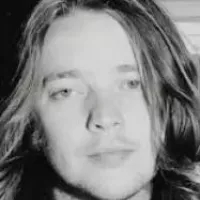
18 days ago Billy Strings Teases Spring 2026 Tour Dates and Shares Activity Sheet.
Popular

Candace Owens is an American conservative political commentator and author...

Tucker Carlson is an American conservative political commentator known for...

XXXTentacion born Jahseh Dwayne Ricardo Onfroy was a controversial yet...

Ilhan Omar is an American politician currently serving as the...

Kashyap Pramod Patel is an American lawyer who became the...

Bill Gates an American businessman and philanthropist revolutionized personal computing...
